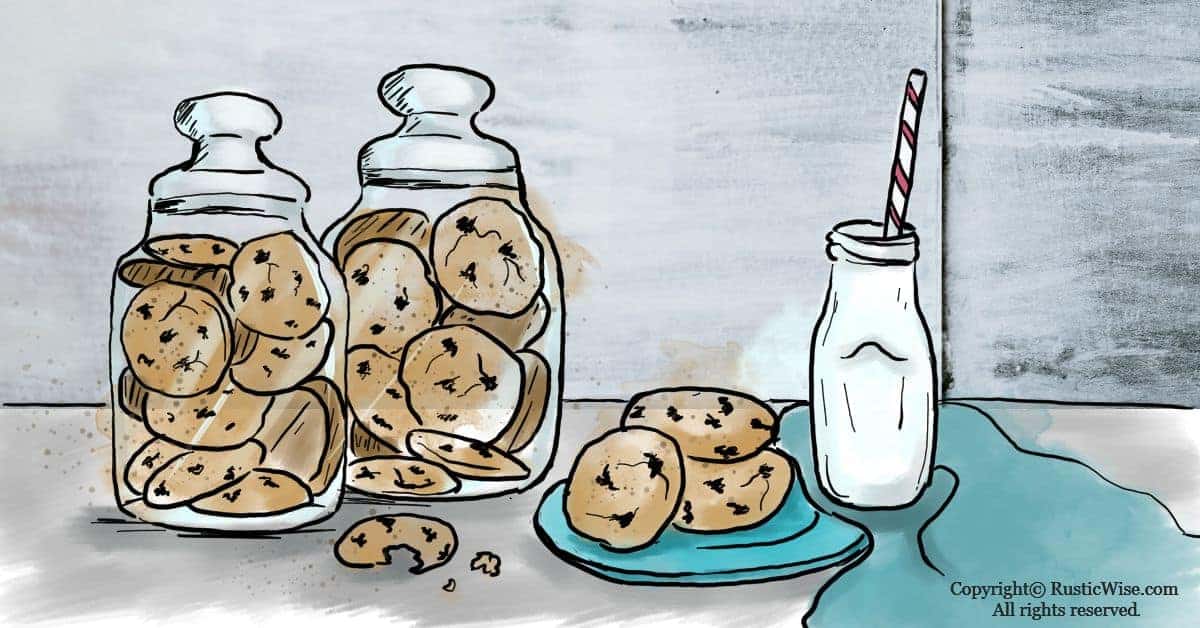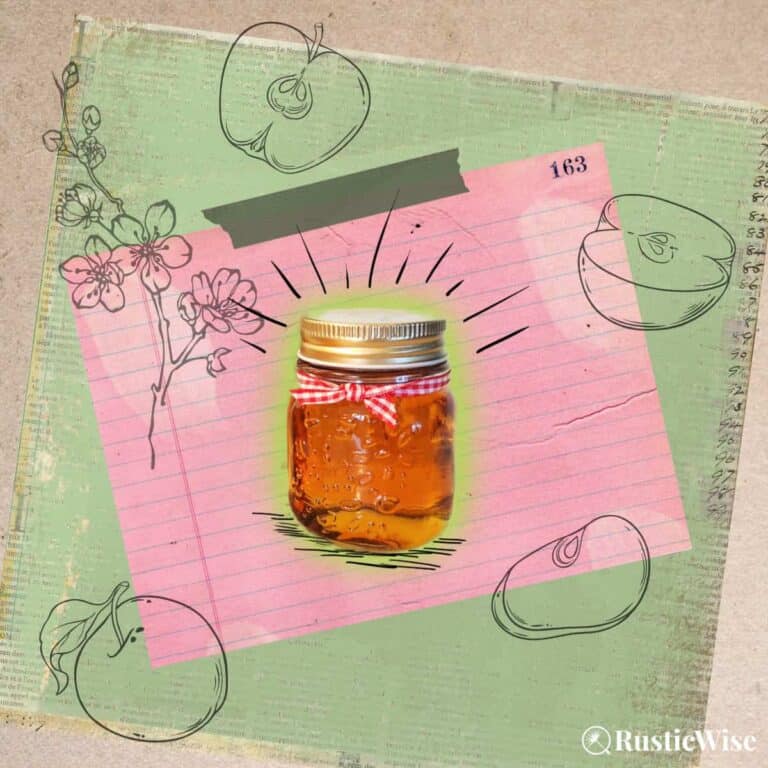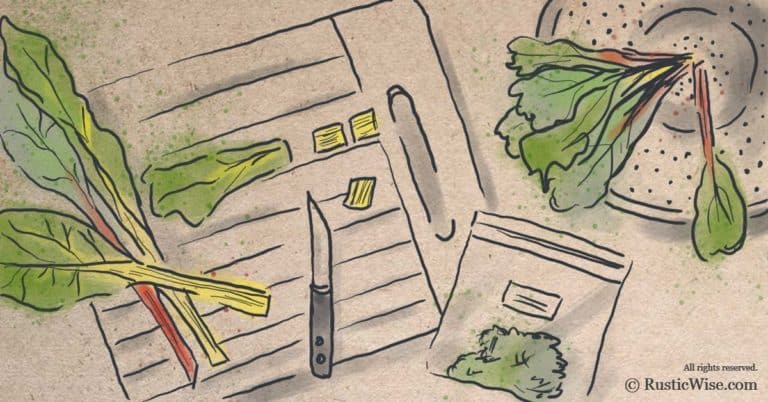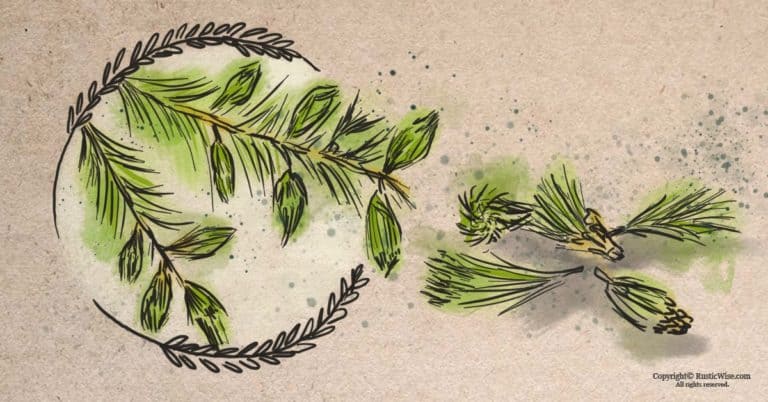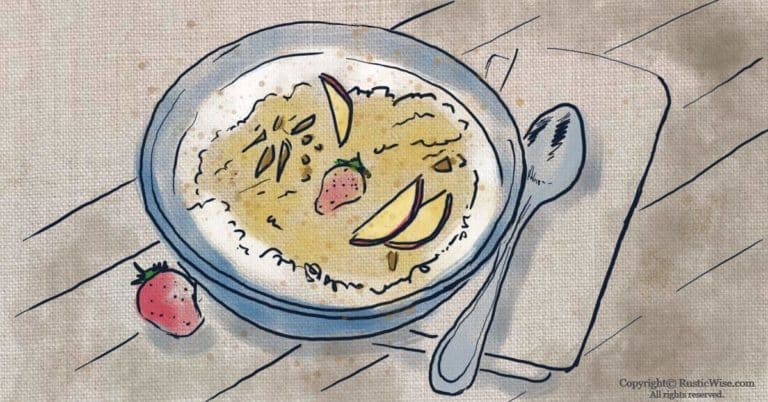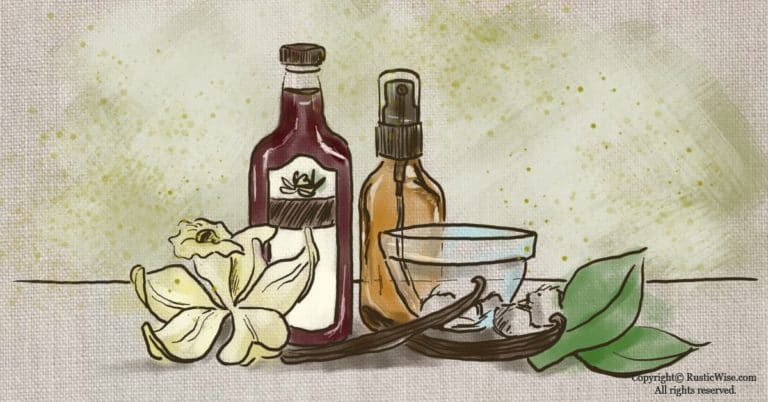How To Increase the Shelf Life of Cookies (10 Easy Ways)
Nothing beats fresh, homemade cookies. The only downside is how quickly they go bad! If you’re wondering how to increase the shelf life of cookies, there are several simple steps you can take to make them last longer. We’ll take a look at how moisture content affects shelf life, proper storage, freezing, plus natural ingredients that can extend the shelf life of your favorite cookie recipe. Plus, we’ll discuss how microbes, staling, and fungi and bacteria cause cookies to spoil.
It’s time to learn how to extend the shelf life of these homemade treats! Because throwing away a batch of cookies is such a shame…
What causes cookies to go bad?
Baked goods have a short shelf life. While commercial baked foods such as pastries, breads, and yes, cookies, typically have a longer shelf life than homemade varieties, this is because of added preservatives.
Home baked foods don’t have the help of preservatives and are more prone to the whims of microbes, fungi, bacteria, and staling.
Let’s take a closer look at each.
Microbes and spoilage
The presence of microorganisms in food leads to the production of enzymes. Most food preservation methods such as canning or freezing work by deactivating enzyme growth.
The moisture content of food is one of the key determinants of shelf life. According to Britannica, if the moisture content of food falls below 12 to 14 percent, then this inhibits the development of bacteria, yeast, and molds.
Luckily, most types of cookies and biscuits fall well below this level.
So, unless you’re working with an exceptionally moist cookie, or a cookie filled with cream, you probably don’t have to worry too much about microbes.
Still, moisture content is important to keep in mind—more on this below.
Fungi
Clean and sanitary workspaces are key to keeping the development of fungi at bay. The heat from an oven destroys all fungi—any fungi that develops on baked goods likely occur after baking.
Many commercially-baked foods use a variety of additives to prevent the growth of fungus such as soluble salts (sodium propionate), sorbic acid, and acetic acid.
Bacteria
The development of bacteria is mainly a concern in moist baked goods such as cream-filled pastries, or pies—not so much an issue in the average cookie.
When moisture content is high, and food is stored at room temperature, foodborne bacteria such as Salmonella and Streptococcus can be found.
Staling
At some point, you’ve probably bitten into a stale cookie, or slice of stale bread. It isn’t pretty (or tasty).
When foods become stale, it happens due to improper storage, or simply the passing of time. Staling happens when there’s a noticeable alteration in the taste, texture, or appearance of food. Changes occur at the molecular level of starches: molecules become more rigid.
Often food becomes dry and crumbly. While loss of moisture plays a role, sometimes moist foods still suffer from staling.
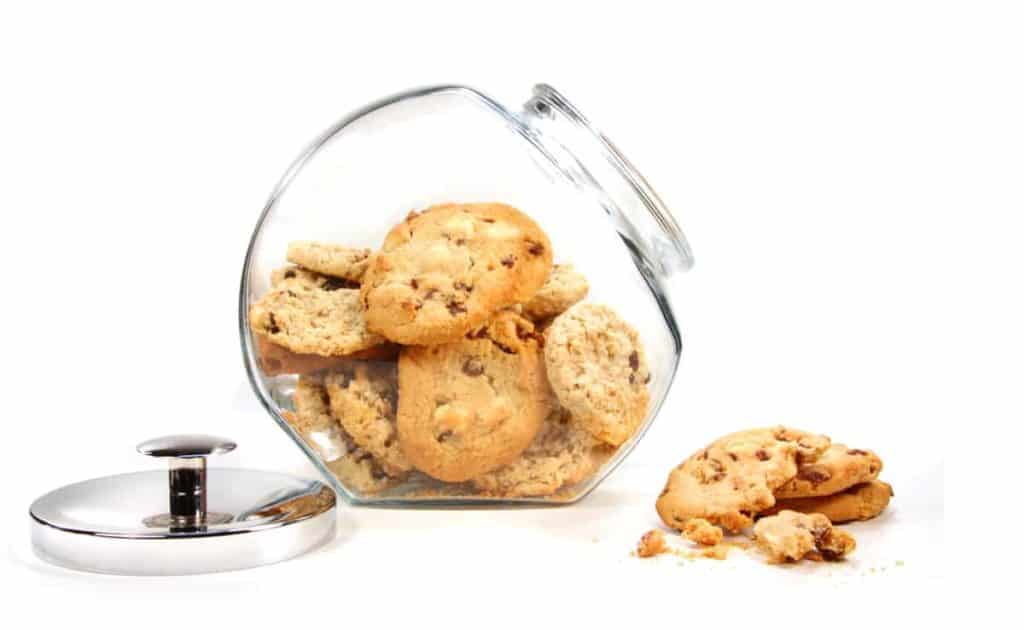
How to increase the shelf life of cookies 10 ways
So now that you know a bit about how cookies actually spoil, here are simple measures you can take to ensure your homemade treats last as long as possible.
Whether you’re sending someone a care package, making holiday cookies, or looking to start your own cookie side hustle, here are 10 ways to extend the shelf life of cookies:
- Limit moisture content
- Freezing
- Proper storage
- Choose white sugar over brown sugar
- Choose shortening over butter
- Add honey
- Allow oven-fresh cookies to cool completely
- Add golden raisins
- Add bread chunks to retain moisture for soft cookies
- Store similar types of cookies together
1) Limit moisture content
As mentioned above, keeping lower initial moisture contents below 12 to 14 percent is important for longevity. The higher the moisture, the shorter the shelf life.
So, if you want your cookies to last longer, you probably don’t want to break out your whoopie pie recipe. It’s important to pick the right recipe. Stick with dryer types of cookies of the drop or cutout varieties.
Here are a few long-lasting types of cookies:
- Dry, drop cookies including gingerbread, molasses, or shortbread
- Cutout cookies such as sugar cookies
- Oatmeal
- Chocolate chip cookies
2) Freezing
If you’re looking at how to increase the shelf life of cookies, look no further than your freezer.
Freezing is one of the easiest and most effective ways to lengthen the shelf life of many types of food including cookies. Freezing baked goods helps to prevent bacterial growth and staling.
Here’s how:
- Line a cookie sheet with parchment paper or aluminum foil and place your freshly baked, cooled cookies on it in an even layer.
- Freeze them for at least 15 minutes before transferring to a freezer-safe, sealed plastic bag or air-tight container. This prevents them from clumping together.
Don’t forget to label!
Frozen baked cookies can last up to 6 months in the freezer.
The best part about freezing cookies is that you can simply thaw at room temperature when you have a sugar craving.
3) Proper storage
When storing any type of pantry item or baked good, it’s vital to store it in a cool, dry, and dark place.
So avoid storing on the countertop next to a sunny window. Avoid placing too close to the heat of the stove, oven, or microwave.
Instead, place it in a pantry shelf or cupboard.
Keep your cookies in an air-tight storage container or resealable plastic bags with excess air squeezed out. Exposure to oxygen results in a shorter shelf life of baked foods like cookies and bread.
4) Choose white sugar over brown sugar
If you’re able to substitute white sugar over brown sugar without changing the taste too much, this may help prolong the shelf life of your cookies.
White sugar has lower moisture content than brown sugar or icing sugars, and it’s less likely to go rancid.
We realize that substituting sugars isn’t always possible, so if you’re sticking with brown sugar, consider freezing your cookies.
5) Choose shortening over butter
Just as white sugar has a longer shelf life than brown sugar, shortening lasts longer than butter. At room temperature, shortening lasts up to 8 months.
If your recipe just isn’t the same without butter, choose salted butter over unsalted. Salt is a preserving ingredient used in many food preservation techniques from curing to pickling.
6) Add honey
If your recipe allows, add honey.
As you may know, a jar of pure honey lasts indefinitely. While some types of liquid honey tend to crystallize with time, it’s still perfectly edible.
According to the National Honey Board, honey is acidic with an average pH ranging between 3.4 and 6.1. The acidic level of honey helps inhibit the growth of microorganisms. With its antimicrobial properties, honey may help your batch of cookies stay fresh for longer.
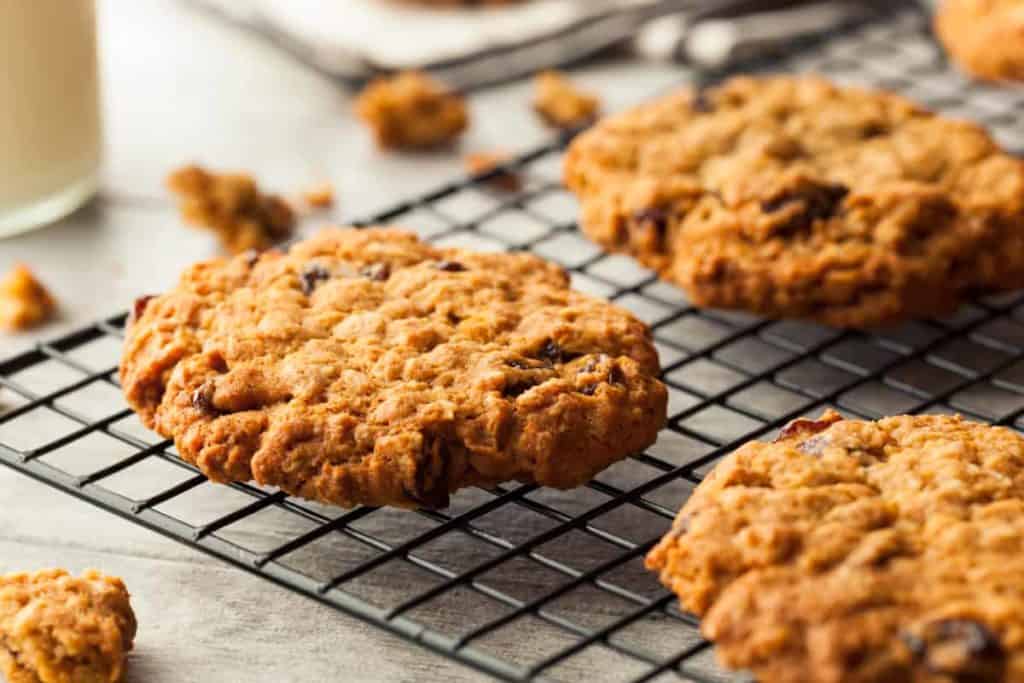
7) Allow oven-fresh cookies to cool completely
If you’re short on time, you may end up placing freshly baked cookies into a storage container before they’ve fully cooled.
This is a mistake as the still-warm cookies develop condensation which leads to moisture, and possibly mold growth if stored in a sealed container.
So, for your sake, and for the sake of not wasting delicious cookies, allow your cookies to fully cool on a cooling rack before packing.
8) Add golden raisins
Of course raisins won’t work with every recipe (nor does everyone even like raisins). But increasing the raisin factor in your cookie recipe may introduce a preservative.
And not any type of raisin will do—only golden raisins need apply.
Golden raisins are different from their sun-dried brown counterparts in both color, taste, texture, and perhaps most importantly—they contain sulfur dioxide.
Sulfur dioxide is used in many commercially-preserved fruits and beverages as it acts as an antioxidant and preservative.
Just know that in small quantities sulfur dioxide is safe, but some people (particularly those with asthma) are sensitive to this preservative.
9) Add bread chunks to retain moisture for soft cookies
If you’ve ever wondered why your favorite auntie’s tin of gingerbread cookies always has small shreds of bread dispersed throughout, it’s to retain moisture.
This old school method works like a charm: cookies with a high sugar content tend to absorb moisture, while bread tends to give off moisture. (Ever notice how crusty bread turns rock hard when not sealed properly after a day or two?)
When sugary cookies and bread are placed together in a sealed container, you’re left with tender and soft cookies.
Obviously you only want to add bread to containers with softer cookies, say if you want to keep your homemade chocolate chip cookies on the chewier side.
So how do you do this? Simply add a slice of white bread to the container and close the lid (or seal the bag). Some people like to rip the white bread into smaller pieces to spread it out.
10) Store similar types of cookies together
If you’re like me, I have a ton of recipes for different types of cookies. One batch is for those crispy sugar cookie cutouts that are sturdy enough to be mailed as gifts. Another type is for my go-to peanut butter chocolate chip cookies that are super-soft and chewy.
Always store these two types in separate containers so they stay fresh for longer.
Store your crispier cookies with other crispy cookies (like biscotti or shortbread), while those softer varieties should live near each other. Two or more types of chewy cookies stored together will keep moisture at optimal levels.
Storing in separate containers prevents one variety from getting dryer than another. This also prevents different flavors from mingling.
How long do cookies last?
Depending on the type of homemade cookie, most can keep at room temperature anywhere from several days up to several weeks.
Freeze cookies up to 6 months.
Frozen cookie dough may keep up to 1 year, but best used within 3–6 months.
How can you tell if cookies have spoiled?
Sometimes you can just tell by looking at a cookie (your once plump and chewy chocolate chip cookies are now shriveled versions of themselves).
Other times, there may be an “off” smell. It’s hard to describe the smell of a stale cookie, but it resembles the smell of stale bread.
And sometimes, you won’t know a cookie is stale until you bite into one. Stale cookies often have a lingering bitter aftertaste.

References
- Britannica, Quality Maintenance, https://www.britannica.com/topic/baking/Quality-maintenance. Accessed July 2021.
- Best Food Facts, Sending Cookies as Gifts? Tips to Help Them Last, https://www.bestfoodfacts.org/desert-safe-foods/#. Accessed July 2021.
- National Honey Board, pH and Acids in Honey, https://www.bjcp.org/mead/ph_acid.pdf. Accessed July 2021.
- Johnson, Emily (02 October 2017). “Why Are Golden Raisins Better Than Regular Raisins?“, Epicurious, Accessed July 2021.
- Bernard J. Freedman, Sulphur dioxide in foods and beverages: Its use as a preservative and its effect on asthma, British Journal of Diseases of the Chest, Volume 74, 1980, Pages 128-134, ISSN 0007-0971, https://doi.org/10.1016/0007-0971(80)90023-6.(https://www.sciencedirect.com/science/article/pii/0007097180900236)

Author: Theresa Tesolin
Theresa is co-founder of RusticWise. She helps people unleash their inner DIY spirit by encouraging them to get dirty and make or grow something from scratch.

